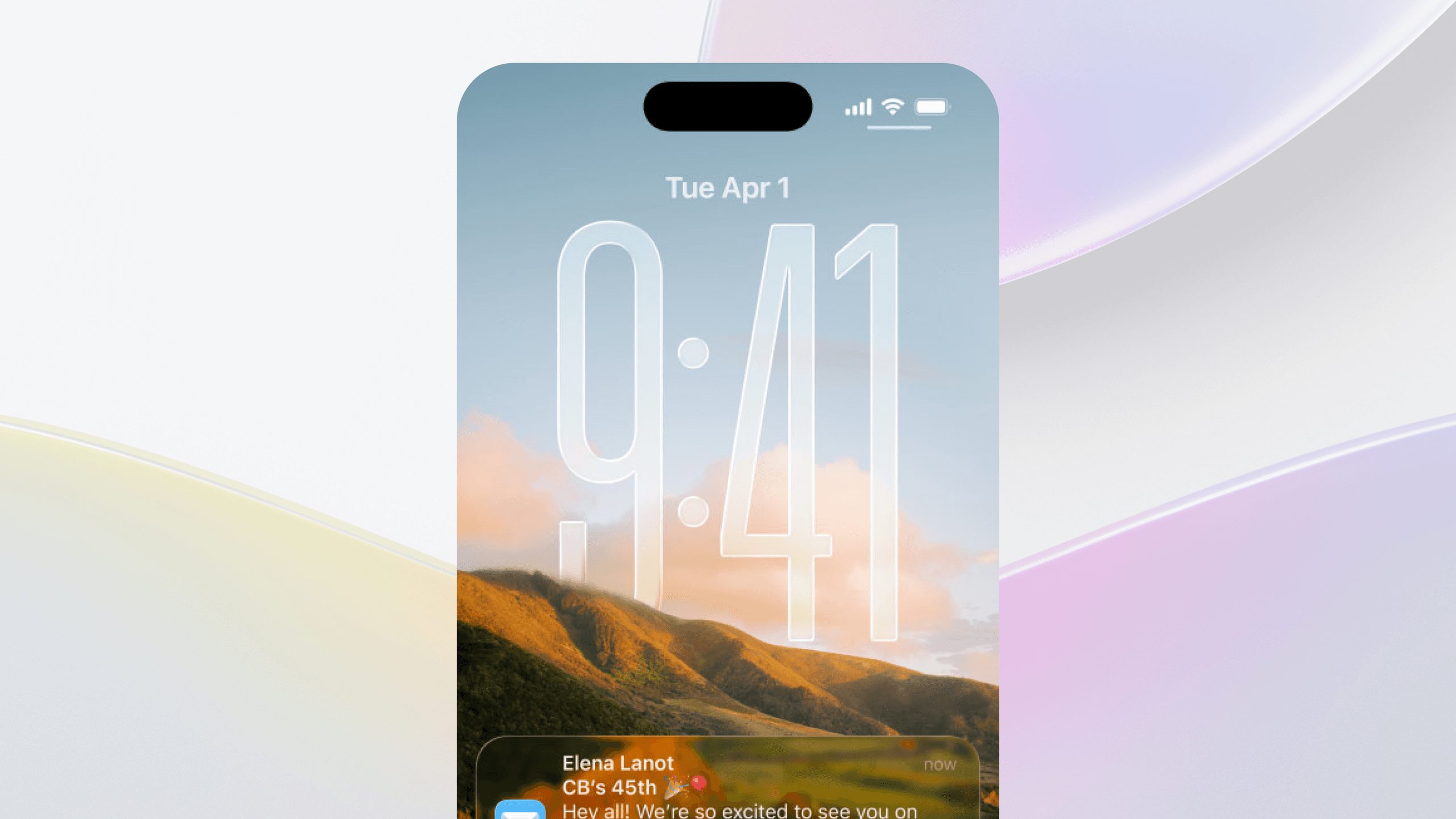Examples of AR use cases include virtual try-on; employee training to increase safety; true-to-scale 3D furniture; creative marketing campaigns; cost- and time-saving support for customers; and production tools for mitigating errors.
Let’s look at a few ways AR solutions are being used, who’s using them, just how dramatic the results have been — and three points to consider before diving into the AR pond yourself.
STRV plug: Check out our AR shopping navigation concept and look forward to an article about our in-house project, AR World.
Quick Clarification: AR vs. VR
While media has been hyperfocused on virtual reality (VR) — metaverse included — AR is a lot more accessible, less controversial and projected to be a bigger market over time.
AR adds virtual objects to an existing environment. VR creates a virtual reality completely simulated by a computer program and places the user within that reality.
AR doesn’t need any special hardware or software. VR requires a headset or goggles.
Rather than pulling you out of reality, AR blends the digital and real worlds. Much softer “Matrix” vibes compared to VR, which isolates you from reality and pulls you into a simulation.
All In: Education, Gaming, Healthcare, Retail, Industrial
According to industry experts and tech leaders, AR will revolutionize business. Most revenue will be split across the education, gaming, healthcare, industrial and retail sectors.
“We expect revenues to primarily favor the healthcare and industrial verticals, owning approximately 54% of the market, thanks to more progressive technology adoption habits along with strong use case applicability,” said Eric Abbruzzese, research analyst at ABI Research.
That “use case applicability” relates to specific benefits. Let’s outline them.
Increase User Engagement, Brand Awareness & Sales
Examples: virtual try-on, scannable product labels, interactive ads, catalogs, store signage…
This is a big one. AR has the unequivocal power to influence buying decisions. Consumers feel connected to a product when it evokes emotion, and emotion is heightened when a product is more than a 2D image on a screen.
The augmented shopping experience isn’t being forced on the consumer. People have always wanted to try a product (clothing, car, house) before buying it. AR is a welcomed next step; 63% of online shoppers say AR will improve their shopping experience.
Use cases:
Pepsi AR bus stop ad in London (similar cases: Pizza Hut, Lacoste, etc.)
- Transformed a bus shelter display in London into a window and generated over 8 million views on YouTube (3 million in 5 days). Sales for Pepsi Max were up 35% year on year for the month the campaign was live.
Snapchat Taco Bell AR lenses (similar cases: Netflix, Gatorade, etc.)
- The animated “taco head” sponsored lens was viewed 224 million times. The average user played with it for around 24 seconds before sending it to friends.
Sephora virtual artist AR app (similar cases: e.l.f. Cosmetics, L’Oreal, etc.)
- Lets customers see how their makeup products will look on them. Recent upgrades have seen a 48% increase in AR makeup feature traffic and a 28% increase in user adoption.
IKEA furniture AR app (similar cases: Wayfair, Lowe’s, Home Depot, etc.)
- Shows customers how furniture will look in their homes. The app’s had 7.43 billion impressions, with 1.2 million downloads and 580+ stories globally in just 24 hours.
Nike Fit AR app (similar cases: Warby Parker, Anthropologie, etc.)
- Helps customers ensure they’re wearing the right-sized shoes. The app is a part of Nike’s direct-to-consumer sales approach, which has led to a 12% annual growth — making direct revenue 30% of Nike’s profits.
Improve Employee Safety & Reduce Costs of Training/Education
Examples: AR goggles in manufacturing, training for healthcare workers, high-risk positions…
The average US company spends more than $1,000 on training per employee. AR-based tools bring that way down because they don’t require a ton of equipment and a large budget. They also deliver greater value.
On top of simulating various scenarios, AR measures the efficiency of training. And because AR tools are multisensory, learning effectiveness is 72% higher than with traditional methods — resulting in increased employee engagement and safety awareness.
Use cases:
Walmart & Chipotle AR hands-on training
- A multisensory, highly practical training experience without the risk of costly real-world mistakes.
Mesmerise AR Allianz engineering training
- Mesmerize developed a simulation for commercial engineers who work at great heights, making a high-risk experience absolutely safe.
Cleveland Clinic AR student training
- Allows health education students to take a 3D holographic anatomy program, diving into the human body while saving dozens of hours in a traditional lab.
Enhance Customer Satisfaction With Fast Repair & Maintenance
Examples: AR owner manuals, how-to videos, 3D overlay images…
The lengthy process and costs of repairing faulty products leave consumers with a headache, often leading them to abandon brands and pen negative reviews. AR solves this by allowing people to identify problems and perform repairs with ease and minimal waiting time.
This clever approach to remote assistance has been proven to increase first-call resolution by 20% while decreasing the need for further customer support by 17%.
Use cases:
- Gives consumers how-to info for repairs, maintenance and vehicle features via videos, 3D overlay images and informational guides.
- Allows consumers to access coffee machine descaling instructions and works with a wide range of smart home applications.
Empower Your Team, Simplify Production & Reduce Mistakes
Examples: remote “see what I see” guidance, superimposed markings, diagrams…
No one is an expert in all things, especially in industries dealing with advanced tech and infrastructures. AR — such as smart glasses — connects employees to relevant professionals in a way that’s almost indistinguishable from them actually being together in one room.
These tools keep a working environment safe, extremely fast and stress-free. According to multiple studies, using AR can result in a 90% drop in errors and 50% faster performance.
Use cases:
Boeing AR glasses for plane wiring
- By guiding technicians through wiring harness assembly for hundreds of airplanes, production time was decreased by 25% and error rates dropped to nearly zero.
GE Healthcare warehouse AR item location
- Providing real-time info about where to locate items by connecting to warehouse systems has made “pick and pack” productivity up to 46% faster.
How to Be Smart When Leveraging AR
So you’re in. You see the benefits and want to jump on the AR bandwagon. Before doing so, there are a few things to remember.
- Don’t just do it, do it right. Make sure you have a meaningful idea rather than following a trend. You’re about to make a huge leap and invest resources into something new, so take the time to analyze the many possibilities and their impact.
- Keep it simple and true to your business. AR should enhance the real world and in this case, “the real world” is the environment in which your product exists. Your target audience, expectations you’ve created, a brand you’ve defined — keep it all in mind.
- Work with experts utilizing the newest tech. We live in a time where things move fast, and that’s especially true with AR. Turn to people who understand the possibilities and constraints of what’s relevant now — not what was cool a few months ago.
In Conclusion: The Future Will Be AR-first
No one can say exactly what’s next for AR, apart from the much-anticipated lightweight glasses (like Apple Glasses) being a potential game-changer. Still, some things are certain.
AR adoption is booming across the board. Even for companies that have less of a direct use for it, business owners have begun testing the waters at a smaller scale. One way or another, everyone wants to be first, and those who are capture consumers’ attention.
We want our partners to be first, and we want to be first ourselves. Luckily, the STRV combo of AR-obsessed focused engineers (including our CTO) and AI/ML data scientists — all verified leaders in their respective fields — is a bit of a superpower we’ve cultivated over the years. We’ve got a whole lot of ideas, and we can’t wait to have even more fun with them.





